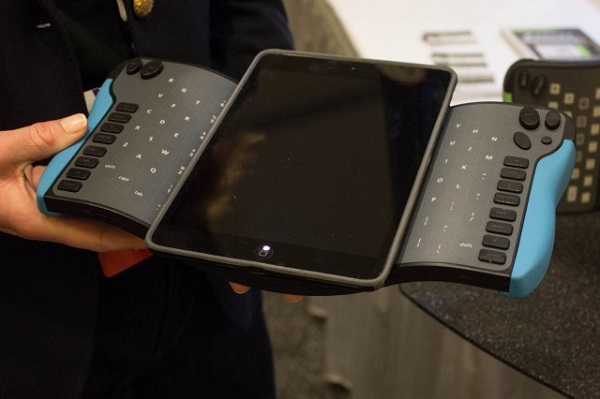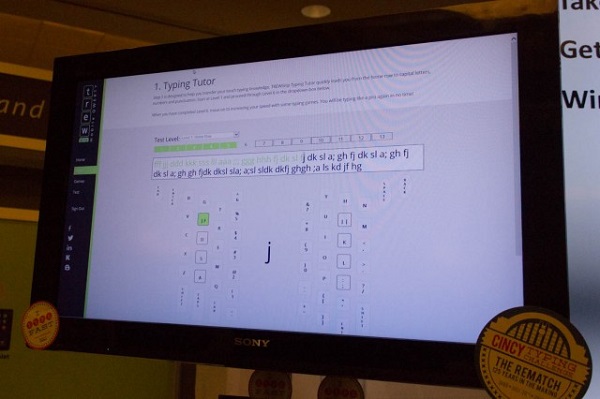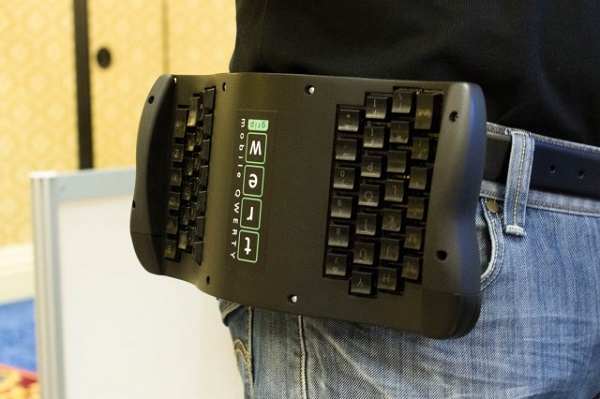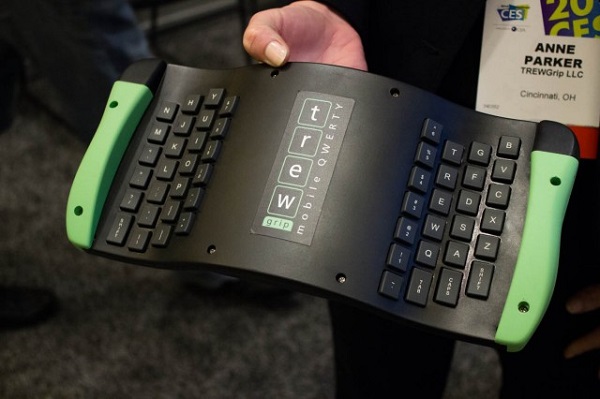Some people are still not willing to let go of hardware keyboards, despite the progress made by the software ones. For such people, TrewGrip may represent the ideal solution to their problem.
In terms of mobile typing, touchscreens and software keyboards are incredible time and space savers. If you still want to carry a hardware keyboard anywhere your smartphone or tablet goes, do not worry, there are plenty of options for you. TrewGrip, the rear-facing handheld keyboard exhibited at CES last week is among the newest ones, though.

One of the first things that will catch the eye is the fact that TrewGrip’s keys are facing away from the typist. That shouldn’t be a problem as long as the keyboard enables people to type relatively fast.

In the center, TrewGrip features a micro-suction pad and magnets that keep the smartphone or tablet attached to the keyboard. It should be mentioned that this rear-facing handheld keyboard cannot accommodate devices with a display larger than 7″.

People accustomed to typing on a typical computer keyboard shouldn’t have any (major) problems when using TrewGrip. The layout of the keys isn’t different, the only notable change being the fact that the keyboard is split in two and each half is placed on the sides of the device.

The developers of the TrewGrip keyboard are aware that it might need some getting used to it, so they also provide a piece of software that should help people improve their speed and accuracy. The manufacturer hasn’t established a price for this device, but it estimates that it should be around $250. My opinion? At that price point, there are far better options that don’t cause fatigue and don’t take that much to learn how to use.
In 2010, Swype set the Guinness World Record for the fastest text message. In this context, many people should be aware that a good software keyboard is the way to go, or otherwise we’d all have smartphones and tablets with built-in QWERTY keyboards. Swiping and word prediction are two of the features that define an efficient keyboard for mobile devices, and yet, some of us still can’t conceive a mobile device without hardware buttons. This is no longer about typing fast, so I assume that these people are creatures of habit and they enjoy the feedback given by hardware keys.
If you liked this post, please check Qii, the only wireless flexible keyboard your smartphone needs and the One2Touch Softpad S1 NFC keyboard.










